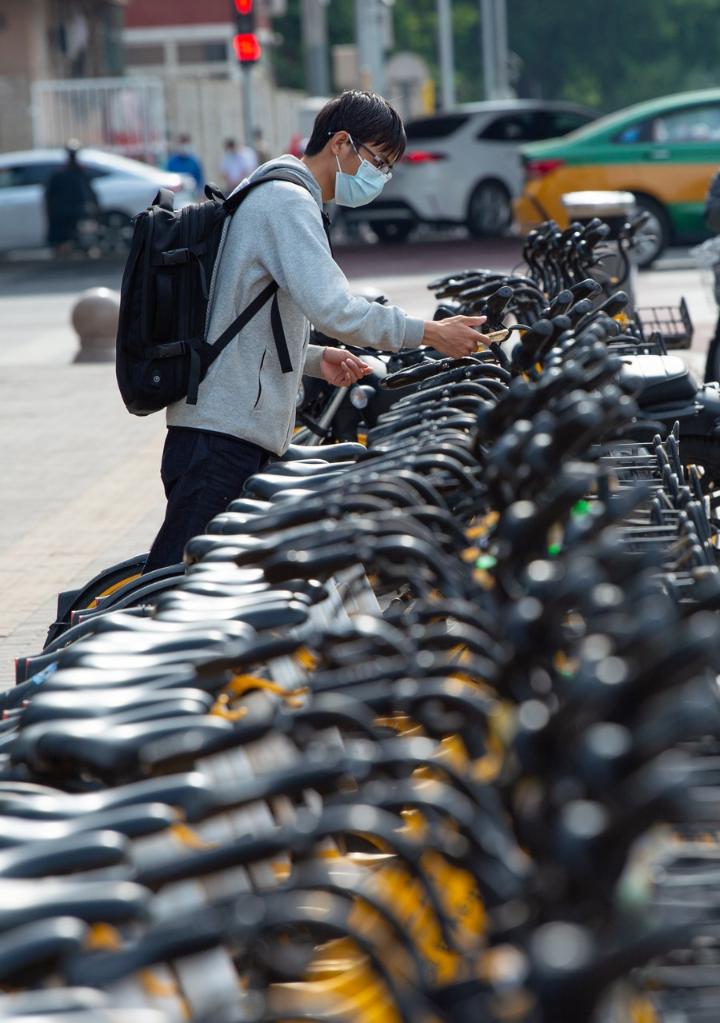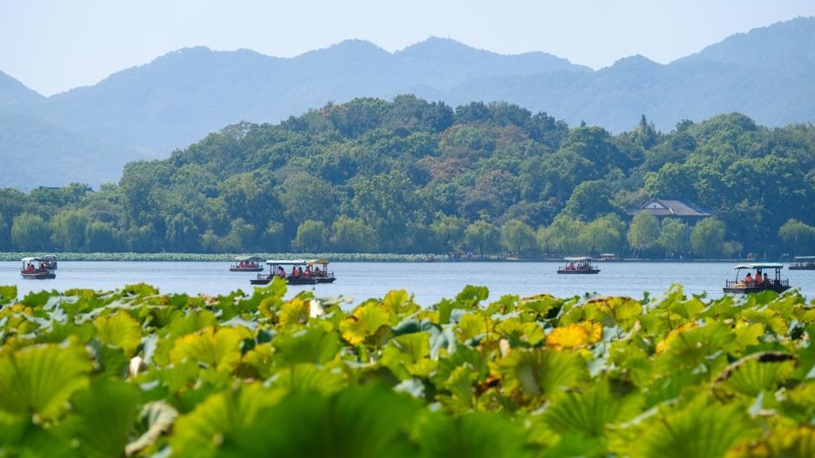
A man scans a QR code to unlock a shared bike outside a subway station in Beijing, capital of China, May 18, 2022. (Xinhua/Chen Zhonghao)
BEIJING, Oct. 5 (Xinhua) -- One of Gao Qingguo's favorite cycling routes begins in the Central Green Forest Park in suburban Beijing, continues by an ancient wharf site, and ends with a ride along the Grand Canal, which offers extraordinary sight-seeing options.
Gao, who is almost 60, is a Beijing resident and has been cycling on a daily basis for 10 years. His cycling experience provides a first-person account of the major transformations in the Chinese capital over the past decade.
LESS POLLUTION, MORE CYCLING
"Cycling has become an indispensable part of my life. I can see the development and improvement of the city while riding in the downtown area, and in suburbs, I can enjoy the natural beauty. It's not just about physical exercise, but also about recreation and socializing with new friends," Gao said.
As the popularity of cycling in China has increased in recent years, a rising number of people have joined Gao to enjoy the sport together.
In addition to the inherent appeal of cycling, the increasing health consciousness among the general public, the promotion of sporting events, the improvement of the urban environment, and better riding facilities are all significant contributors to the "cycling craze," said Kong Xianfei, director of the Beijing municipal social sports management center.
Ten years ago, there used to be a large chemical plant in the vicinity of today's Central Green Forest Park. After decommissioning the chemical plant and carrying out a comprehensive plantation drive, the area has become a popular destination for cyclists like Gao.
Including this chemical plant, Beijing has witnessed the exit of 3,000 general manufacturers and polluters as well as the launch of two rounds of million-mu level afforestation over the past decade.
This exemplifies China's unprecedented efforts to substantially and effectively combat pollution. As a result, phased objectives for reducing pollution have been successfully completed, and the country's eco-environment has been further improved.
"The sky is bluer, the water is clearer, and the air is fresher" -- this is the biggest and the most impressive change Gao has seen over the decade.

Visitors ride bikes during the 30th China International Bicycle Fair in east China's Shanghai, May 5, 2021. (Xinhua/Fang Zhe)
BIKES MAKE A COMEBACK
In 2021, the proportion of slow traffic travel in central Beijing reached 47.8 percent, the highest in nearly a decade. From year to date, the number of shared bicycle rides in Beijing has reached 601 million, with an average of over 2.28 million rides per day, said Rong Jun, deputy director of the Beijing Municipal Commission of Transport.
Riding bicycles is not a new thing in China. In fact, as late as 1986, approximately 45 percent of Beijing residents commuted by bicycle.
However, with the rapid rise of motor vehicles since the 1990s, the ratio of cycling as a means of transportation has continued to decline.
Beijing has continuously improved the quality of non-motorized traffic in recent years by formulating necessary policies and standards, enhancing the ecosystem for non-motorized traffic, and building bicycle priority lanes, said Hu Ying, chief engineer at the Beijing Transport Institute.
According to a traffic management action plan of the Beijing municipal government, the proportion of green travel in the central districts of Beijing will reach 74.6 percent by the end of this year. During the 14th Five-Year Plan period (2021-2025), all roads with a width of 12 meters or more inside the Fifth Ring Road in Beijing will have designated bike lanes.
Other cities in China are also striving to create conducive conditions for green travel, building an increasing number of designated lanes.
China has pledged to have carbon dioxide emissions peak before 2030 and achieve carbon neutrality before 2060, making the world's biggest cut in carbon emission intensity in the shortest time frame in history.
"If a person switches from automobile to bicycle, approximately a tonne's carbon emissions can be reduced per year," Hu said. The shift in transport structure is crucial to achieving the carbon reduction goals.
It is believed that the growing "cycling craze" in China indicates that an increasing number of Chinese people are embracing a green and low-carbon lifestyle. ■












